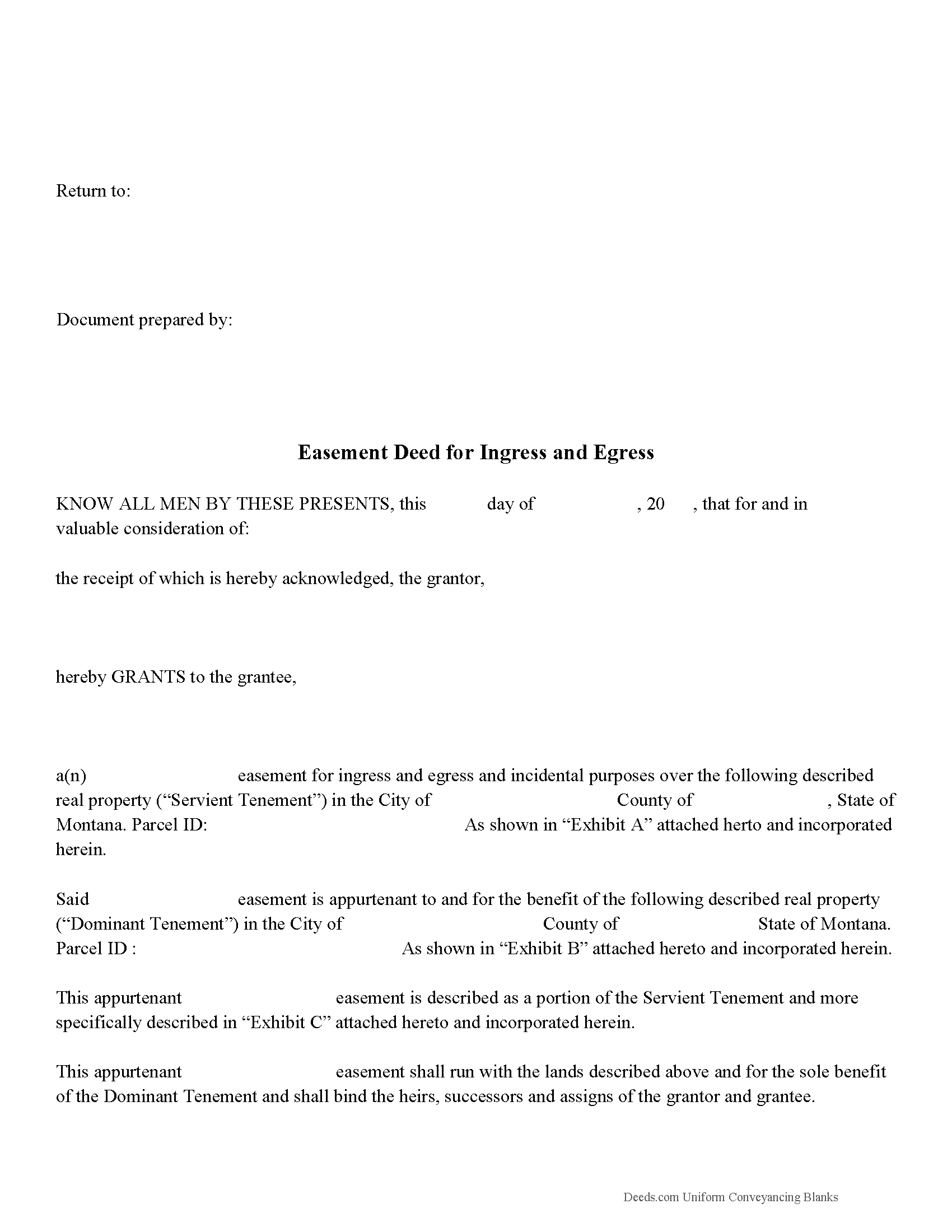Montana Easement Deed
County Forms
Where is the property located?
Beaverhead CountyBig Horn CountyBlaine CountyBroadwater CountyCarbon CountyCarter CountyCascade CountyChouteau CountyCuster CountyDaniels CountyDawson CountyDeer Lodge CountyFallon CountyFergus CountyFlathead CountyGallatin CountyGarfield CountyGlacier CountyGolden Valley CountyGranite CountyHill CountyJefferson CountyJudith Basin CountyLake CountyLewis And Clark CountyLiberty CountyLincoln CountyMadison CountyMccone CountyMeagher CountyMineral CountyMissoula CountyMusselshell CountyPark CountyPetroleum CountyPhillips CountyPondera CountyPowder River CountyPowell CountyPrairie CountyRavalli CountyRichland CountyRoosevelt CountyRosebud CountySanders CountySheridan CountySilver Bow CountyStillwater CountySweet Grass CountyTeton CountyToole CountyTreasure CountyValley CountyWheatland CountyWibaux CountyYellowstone CountyEasement Deed for Real Estate Located in Montana

An easement is the right to use another person's property for a specific purpose. In Montana, any person who has a vested interest in a servient tenement can create a servitude (70-17-104). The land to which the easement is attached is the dominant estate, and the land upon which a burden or servitude (easement) is held is called the servient estate (70-17-103). The extent of the easement is determined by the terms of the grant or the nature of the enjoyment by which it was acquired (70-17-106). A transfer of real property in this state will pass all the easements attached to the property and will create in favor thereof an easement to use other real property of the person whose estate is transferred in the same manner and to the same extent as such property was obviously and permanently used by the person whose estate is transferred for the benefit thereof at the time the transfer was agreed upon or completed (70-20-308).
An easement that is obtained for the purpose of exposure of a solar energy device must be created in writing and is subject to the same conveyancing and recording requirements as other easements on real property (70-17-301). Wind easements are also created in the same manner (70-17-403).
An easement deed is required to be in writing and must be signed by the grantor or the grantor's lawful agent authorized in writing. Before the real property instrument can be recorded, the execution of the easement deed must be acknowledged as defined in 1-5-602 of the Montana Code Annotated or proved by subscribing witnesses, which must also be notarized (70-21-203). If the easement deed is acknowledged in a state other than Montana, it can be done before any of the officers listed in MAC 1-5-606, and it will be valid in Montana.
An easement deed that has not been recorded will only be valid between the parties to it and those who have notice thereof (70-21-102). Once the easement deed has been acknowledged or proved, certified, and recorded, it will be deemed to impart constructive notice of the contents thereof from the time it is filed with the county clerk for record (70-21-302). Easement deeds should be recorded in the county where the property is located. If the property is located in more than one county and the easement has been recorded in either of such counties, a certified copy can then be recorded in the other county where the rest of the property lies (70-21-201).
(Montana ED Package includes form, guidelines, and completed example)